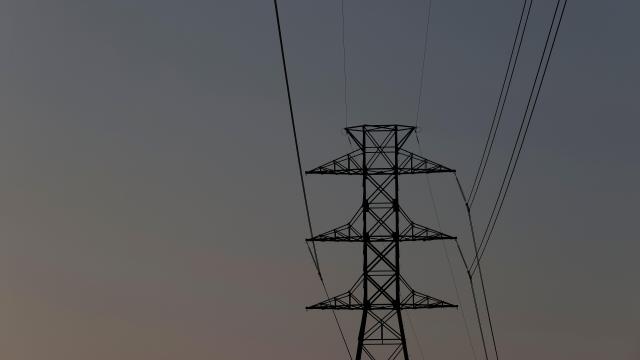A chunk of the U.S., from California to Texas to the Midwest, is at risk of blackouts and unreliable power supply this summer as extreme heat and drought impact the electric grid, a major regulator said Wednesday.
In an annual assessment of grid conditions, the North American Electric Reliability Corporation (NERC), a nonprofit organisation that monitors the nation’s electric grids, said that the grid serving much of the Midwest is at “high risk” for energy emergencies this summer. Meanwhile, electric grids that bring power to the West and Texas could also see serious problems.
“It’s a pretty sobering report, and it’s clear the risks are spreading,” John Moura, a director at NERC, told reporters in a press briefing. “I certainly do think it’s our most cautionary tale here.”
A lot of the most serious trouble is going to be in a middle region of the country that gets their power delivered from what’s known as the Midcontinent Independent System Operator, which operates the grid in 15 states and parts of Canada. Baseline power demand in this region is back up since the pandemic, the assessment finds, but extreme temperatures could jack up that demand even further, creating “high risk of energy emergencies during peak summer conditions.” Some nuclear, gas, and coal plants belonging to another grid operator in the region, the Southwest Power Pool, use the Missouri River to cool down their generators. Drought conditions in the Missouri River Basin, the assessment found, could affect output from those power plants as well.
Drought in the West is also going to stress out the grid in that region, as hydropower supply is threatened by devastatingly dry conditions. Earlier this month, federal officials said they would take unprecedented steps to maintain water levels in Lake Powell, whose dam provides electricity for 5.8 million households across the West, after a disappointing snowpack year and continued high temperatures continue to choke the West. While California and other Western states should have enough power to meet most of their demands, the report finds, extreme drought and heat conditions could create some emergencies. Rampant wildfires, which have wreaked early season havoc in New Mexico, can also pose unique hazards, as wildfire smoke and haze could obscure sunlight and make solar panels less efficient. Blazes could also short-circuit connection lines and destroy other equipment.
Texas is no stranger to problems with power: the devastating failure of its grid (known as ERCOT) in February 2021 caused hundreds of deaths, and it barely held on during last summer’s high heat. This summer, the NERC report found that increased solar and wind supply on Texas’s grid — the same renewable supplies that Republican lawmakers have repeatedly scapegoated and aggressively legislated against — has improved the grid’s capacity to respond to more demand. However, the well-documented issues with ERCOT persist, and could become worse with extreme temperatures this summer, especially if a hot day also happens to be not very windy and decreases wind generation.
During a press conference on the report, an ERCOT representative assured reporters that the grid would be fine during the summer, but experts questioned that rosy outlook.
“To me, it’s sort of a roll of the dice that we might have serious problems this summer, a rough guess of a 1 in 6 chance,” Daniel Cohan, an associate professor of environmental engineering at Rice University, told E&E News. “And as the climate continues to warm, we’ll keep loading the dice with greater possibilities of extreme weather.”
One of the key strategies in preventing even more extreme weather in the future is something grids across the country are already doing: transitioning from fossil fuels to renewables. But the energy transition, NERC said, is also posing its own problems. Dirtier plants are going offline faster than renewables can come online, which means remaining gas and coal plants are having to run harder. Supply chain issues are also hampering some solar projects and transmission lines, while some of the remaining coal plants on the grid are having problems getting enough fuel to run thanks to delivery issues.
Regardless of how fast the U.S. transitions off dirty energy, one thing is clear: extreme weather is now the new normal, thanks to climate change.
“‘Extreme’ doesn’t mean ‘rare,’” Moura told reporters of the upcoming weather conditions. “We know these conditions are not rare.”
